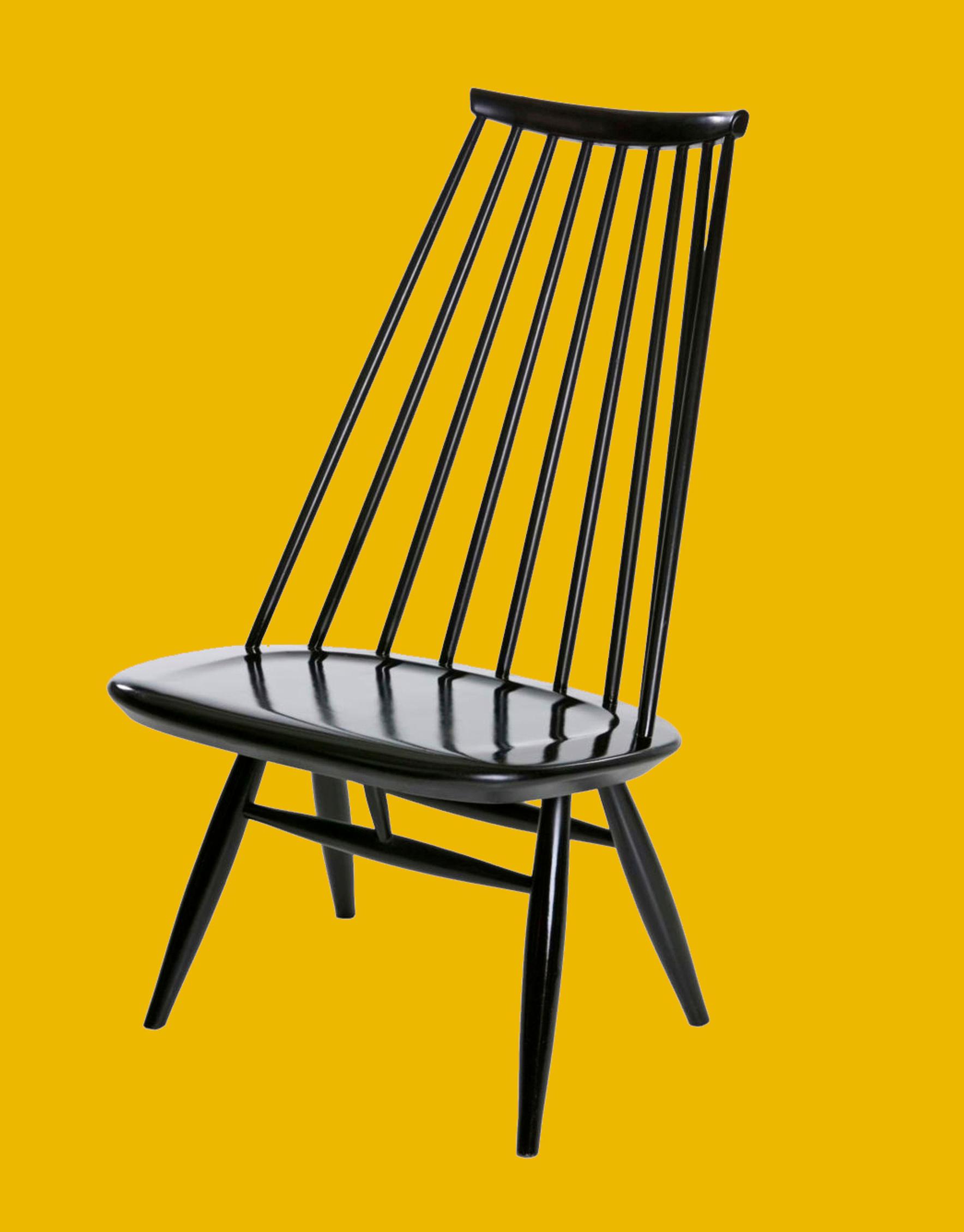
The spindle-back chair’s journey from Windsor to Finnish summer cottages—discover the story of this furniture icon
Spindle-back chairs were especially popular around dining tables in the 1950s and 1960s. The best-known model is Ilmari Tapiovaara’s Fanett, which was produced by the millions in Finland and Sweden.
Spindle-back chairs originated in southern England in the 1700s. There, a chair model was developed with a backrest made of thin, decoratively turned wooden spindles. Named for the place where it was manufactured and sold, it became known as the Windsor chair. Because it was light and suited to mass production, the Windsor chair also traveled with immigrants to the American continent, becoming a popular seat in every home.
In the Nordic countries, spindle-back chairs became more widespread in the late 1800s, when furniture production moved to professional cabinetmaking factories. Their product range often included a decorative spindle-back chair. Farmhouse-style spindle-back chairs had handsomely turned legs and a solid wood seat.
Another spindle-back piece that gained popularity at the same time—and was considered a luxury item in its day—was the rocking chair. This variation of the Windsor chair was fitted with rockers in the United States, and from there, it made its way to Europe.
With industrialization, spindle-back chair production moved to furniture factories. These chairs fit well into industrial mass production because they were assembled from identical parts that were easy to replicate.
Spindle-back chairs gained a fresh look at the turn of the 19th and 20th centuries, when Finnish manufacturers learned to bend plywood. Their comfort was improved by sculpted plywood seats, which were inspired by the Viennese chairs produced by the Thonet factory.
During the interwar period, spindle-back chairs with plywood seats were produced in Finland by companies such as the Schauman factory.


After World War II, spindle-back chairs featured a more streamlined look. Their decorative flourishes were pared down from the backrests and legs, replaced by a simpler, lighter, and homier design. The era’s best-known spindle-back chair was designer Ilmari Tapiovaara’s Fanett. Production first began at the Swedish Edsbyn factory in 1949, as the company looked for ways to use leftover wood from ski manufacturing. From 1955 onward, the chair was also produced in Finland, when the furniture manufacturer Asko took it up.
The Fanett was popular in the 1950s and 1960s. In Sweden alone, more than five million chairs were produced. Fanett was also a commercial success in Finland, so it’s no surprise it inspired other furniture makers to create their own or slightly modified spindle-back models.
In addition to serving as kitchen dining chairs, spindle-back chairs also became more common in other parts of the home. For example, Ilmari Tapiovaara designed the Mademoiselle (1957) and Crinolette (1961) lounge chairs and the Mamselli rocking chair (1960) for Asko. Many other factories also produced modern spindle-back rocking and lounge chairs.
Production of the Fanett ended in Finland in 1966 and in Sweden a few years later, though different spindle-back chairs stayed in factory catalogs in somewhat modified forms. At Asko, the Fanett was followed in the 1960s by the Pirjo, Pelimanni, and Sara chairs, and in the 1970s by the Terhi chair. Spindle-back chairs also adopted the era’s trend colors, like bright yellow and fire-engine red.
Many people later took their old spindle-back chairs to their summer cottages. Thanks to the resurgence of retro style, these chairs have once again become popular. Because so many were produced, they’re easy to find at flea markets.




